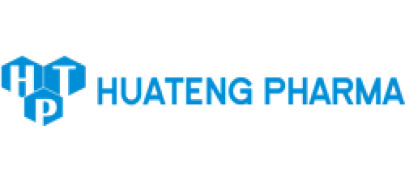What Are PEG Linkers and Their Applications?

PEG Derivatives
Learn more detailes about PEG linkers and its applications in pharmaceutical field.
Polyethylene Glycol (PEG) is a general term for ethylene glycol polymers with relative molecular weights of 200-8000 and above, which have different physicochemical properties depending on their molecular weights and structures. It has excellent lubricant, moisturizing, dispersing and adhesive properties, and can be used as antistatic agent and softener, etc. It is widely used in cosmetics, pharmaceutical, chemical fiber, rubber, plastic, paper, paint, electroplating, pesticide, metal processing and food processing industries.
Through a chemical synthesis reaction, PEG linkers can be made by precisely introducing functionalized groups with strong reactivity at specific molecular ends of PEG. Since a variety of groups can be introduced, PEG linkers are widely used in biological and medical research due to their solubility in water, excellent biocompatibility, and non-immunogenicity.
Application of PEG LinkersLong-acting drug is a traditional application of PEGylation, which has been clinically applied for more than 30 years and gradually become the mainstream solution for long-acting drug. As the research of PEGylation progresses, its application fields are widening, besides peptide and protein drugs, it is also applied to small molecule drugs, ADC drug linker, gene drug (siRNA, mRNA) delivery and hydrogel-based devices, etc.
1. PEG in Long Acting Drugs (Mainly Protein & Peptide Drugs)In the 1970s, Professor Frank Davis of Rutgers University modified bovine serum albumin with PEG in order to reduce the immunogenicity of recombinant proteins, prolong their metabolism in vivo and enhance protein activity. Since then, this technology has been widely used in many fields of biomedicine. In 1981, Professor Davis founded Enzon Pharmaceuticals, and in 1990, the FDA approved Adagen® (pegademase bovine) , the world's first PEGylated drug for severe combined immunodeficiency disease. Since then, PEGylated ADA, IFN, CPT, rhG-CSF, L-asparagi-nase, and many other products have been introduced. To date, there are more than 30 FDA or EU-approved PEGylated drugs on the market worldwide, with a market size of more than $10 billion. From the marketed products and pipeline products under development, the current research and development direction is mainly PEGylation of protein and peptide drugs.
The principle of long-acting PEGylated protein and peptide drugs is to reduce renal clearance and reduce the rate of enzymatic degradation. Protein and peptide drugs are composed of amino acids, which are often rapidly excreted through the kidneys or inactivated by proteolytic enzymes after their action in the body. As a result, their efficacy is short and can cause large changes in the blood concentration of drugs within a short period of time. In addition, these drugs may be recognized by the body's immune system as foreign substances in vitro, causing further adverse reactions.
Linking with specific PEG derivatives can increase the relative molecular weight of drugs, making them less likely to be degraded and filtered out of the body by the kidneys, and prolonging the duration of effective drug concentration maintained in the body. In addition, the long-chain PEG derivatives can wrap the drug to avoid rapid enzymatic degradation or recognition by the immune system, so that the drug can be released slowly in the body, stabilizing the blood concentration and reducing the frequency of drug administration.
Advantages of PEGylated proetin & peptide, image source: biocompare.com
2. PEG in Small Molecule DrugsPEGylation can address certain deficiencies in the physicochemical properties and pharmacokinetics of small molecule drugs.
First, the problem of water solubility of drugs can be solved. Many small molecules with drug activity are often insoluble in water and have high toxic side effects, making them difficult to be injected into human body. Since PEG derivatives have good water solubility, the drugs formed by coupling PEG with small molecules can also be dissolved in water quickly, so that they can be used as injections and absorbed by the human body.
Secondly, the half-life of the drug can be increased. Due to the increased relative molecular weight of PEGylated small molecule drug, it can avoid being rapidly filtered out of the body by the kidneys. As a result, the effective drug concentration can be maintained in the human body for a longer period of time with a single injection, increasing the half-life of the drug and reducing the frequency of drug administration for patients.
In 2014, AstraZeneca received FDA approval for its PEGylated derivative of naloxone (Movantik), making it the world's first approved PEGylated small molecule drug ...

Related News
-
News galenIQ: a brand of Beneo
The number one provider for medicated lozenges. Hard-boiled lozenges with galenIQTM 900 - the sweet filler-binder.
Position your company at the heart of the global Pharma industry with a CPHI Online membership
-
Your products and solutions visible to thousands of visitors within the largest Pharma marketplace
-
Generate high-quality, engaged leads for your business, all year round
-
Promote your business as the industry’s thought-leader by hosting your reports, brochures and videos within your profile
-
Your company’s profile boosted at all participating CPHI events
-
An easy-to-use platform with a detailed dashboard showing your leads and performance
